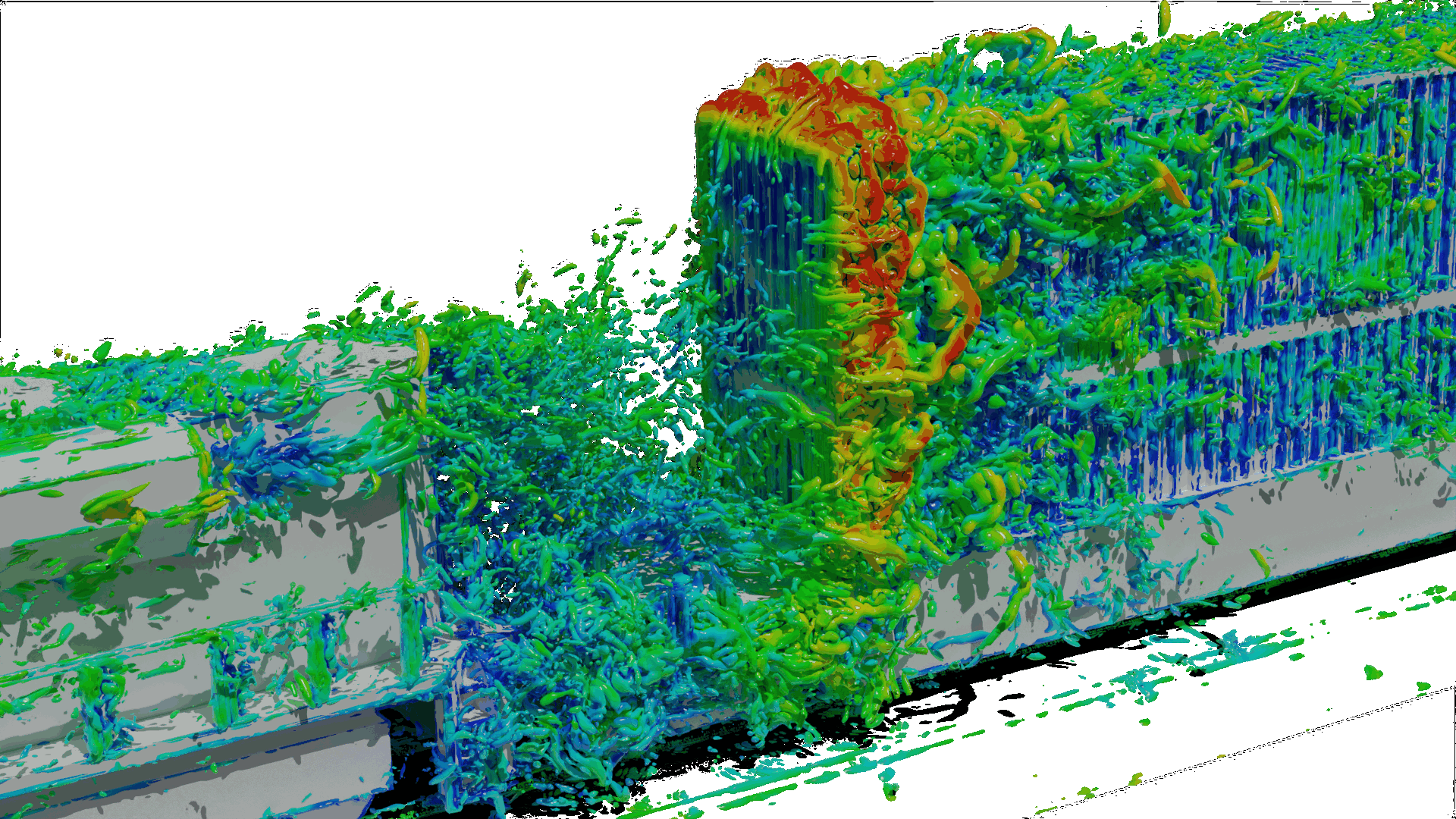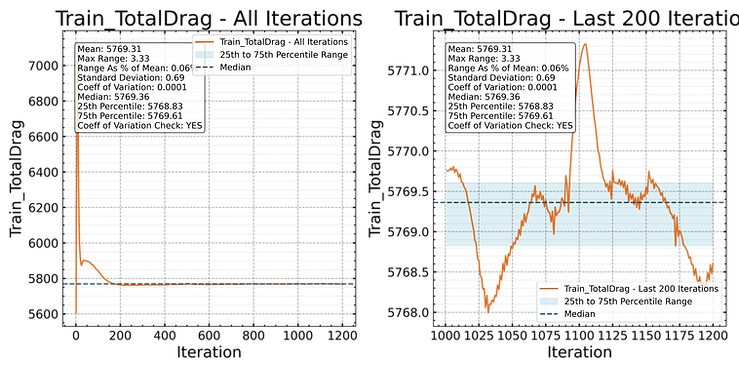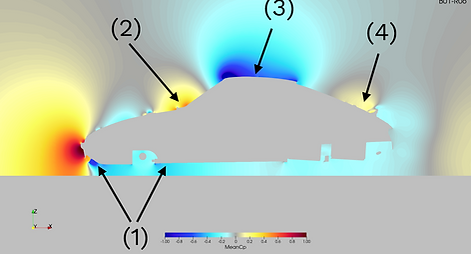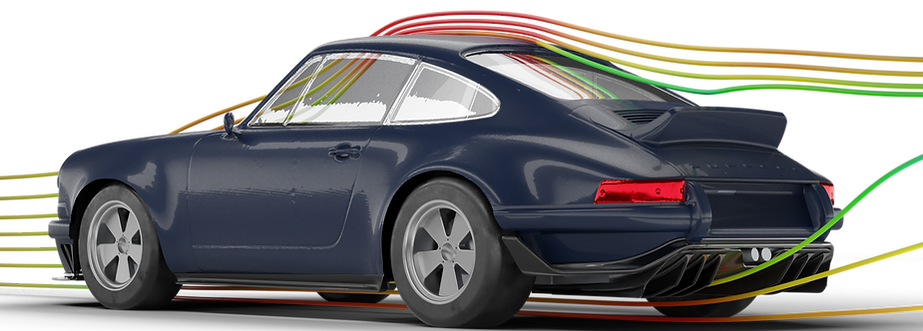
Our CFD Simulations
At VFluid Advanced Technologies, we go beyond just running simulations—we ensure they deliver accurate, reliable, and actionable insights.
Our expertise and streamlined processes provide high-fidelity CFD results from the start, saving you time and resources.
Whether optimizing aerodynamics for performance, efficiency, or stability, our simulations give you the confidence to push boundaries and innovate faster.
At VFluid Advanced Technologies, we recognize the immense potential of Computational Fluid Dynamics (CFD) in development projects. CFD provides a wealth of critical insights at a fraction of the cost of experimental testing.
However, it can be a double-edged sword - when not executed properly, it may produce misleading or unrealistic results, wasting valuable time and resources.
Our team has years of experience delivering high-quality CFD simulations and experimental validations. We've refined a streamlined and automated process, built on expertise and proven methods, so you get accurate results from the very beginning.
Thanks to our background in Formula 1, backed by our colaboration with the FIA for World Endurance Championship (WEC) car homologation, we bring top-tier tools and expertise directly to your project. With VFluid, you avoid the steep learning curve of setting up an aerodynamic department and start benefiting from reliable, high-end simulations right away.
CAD Modelling
If you already have a CAD model for your project, we will seamlessly integrate it into our workflow to create a CFD-ready geometry.
For clients without CAD models, we offer comprehensive scanning services to generate accurate, CFD-ready models from physical vehicles. This ensures no barrier prevents your project from progressing to the next stage.


Porsche 911 CAD top view

Porsche 911 CAD underfloor view

Porsche 911 CAD top view
CFD Setup
Each project is unique, and our extensive experience allows us to design a CFD model tailored to your specific requirements. Whether you need steady-state RANS simulations, unsteady DES, straight-line performance analysis, or a full aero map, we customize our approach based on your vehicle’s characteristics, project goals, time constraints, and budget.
We also incorporate techniques such as rotating wheel models and radiator-fan coupling to ensure our simulations accurately represent real-world conditions.
Our team will guide you through the options, optimizing the model to deliver the results you need.

Mesh
The mesh is the backbone of any CFD simulation, and getting it right is critical. A well-crafted mesh preserves essential details, maintains quality, and avoids excessive cell counts that increase computational costs.
At VFluid, we leverage our vast experience to optimize meshes for each project, balancing accuracy and efficiency. Typical mesh sizes for steady-state RANS simulations include:
-
Bicycle: ~40 million cells
-
Motorbike: ~65 million cells
-
Road Car: ~90 million cells
-
Motorsport Car: ~120 million cells
-
Train: ~200-900 million cells (depending on configuration)


Mesh Independence
When a mesh is created to solve a simulation, we are converting a continuous media into a discretized one. The finer the discretization, the closer it will be to match the real, continuous field. Nevertheless, the computational power required and solving time drastically increases with mesh size.
In order to have an optimized process, a mesh independence study is needed to ensure that the mesh used is the smallest possible (optimizing solving time) while the results are not dependent on the mesh (minimizing discretization error).

In this case, it can be seen how going over 60 million cells do not produce a change in ClA.
*Results extracted from a motorbike project which geometry can’t be shown for confidentiality reasons.
Convergence
Due to the inherent limitations and hypothesis of CFD simulations, it is necessary to ensure the results are reliable before drawing conclusions or performing any development.
Ideally, experimental data should be available to check correlation results and better tune the CFD model.
As this is not available for many projects, it must be checked that the simulations are properly converged.
This way is ensured that the results are consistent and trustable, so the desired development can be done with minimum numerical uncertainty.
At VFluid, we analyse the evolution of different forces monitors and perform an statistical analysis to evaluate if the solution has converged.

Baseline Results and Benchmarking
A thorough analysis of the baseline geometry is the first step in any aerodynamic development. By understanding the flow behavior around the initial design, we identify critical areas for improvement, allowing resources to be focused effectively.


For instance, in a recent project, baseline simulations revealed an unbalanced lift distribution that posed stability risks at high speeds. This insight enabled targeted development to create a more balanced and safer vehicle.
Sensitivities & Aeromapping
Understanding how a vehicle performs under varying conditions is vital to ensure consistent performance. Our sensitivity analyses, ranging from ride height and crosswind effects to full aero mapping, provide a comprehensive understanding of your vehicle’s behavior across different scenarios.

These insights help refine designs to meet performance targets under real-world conditions.

Performance Evaluation
We translate aerodynamic data into tangible performance metrics. Whether your goal is to reduce drag for fuel savings and higher top speeds or to increase downforce for enhanced cornering and lap times, our models link aerodynamic improvements to real-world benefits.
Our approach ensures that the gains achieved in simulations translate directly into measurable advantages for your project.


Conclusions
At VFluid Advanced Technologies, our mission is to empower clients with CFD data driven solutions that drive innovation and performance. By combining deep expertise, advanced tools, and a commitment to precision, we deliver results that instill confidence and push the boundaries of what is possible.
Whether you are developing a road car, a race car, a truck or a train, VFluid is your trusted partner in aerodynamic excellence. Let us help you turn your vision into reality with simulations that are as reliable as they are insightful.
Download our Whitepaper about the CFD Development we did on a Porsche 911 to gain a glimpse on what you can expect performing a CFD project with us.

